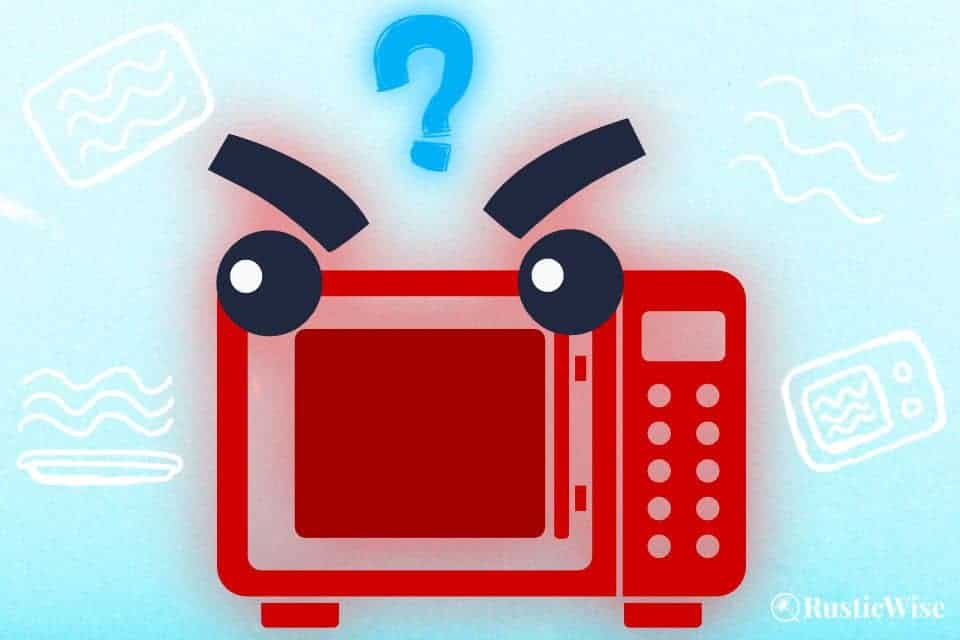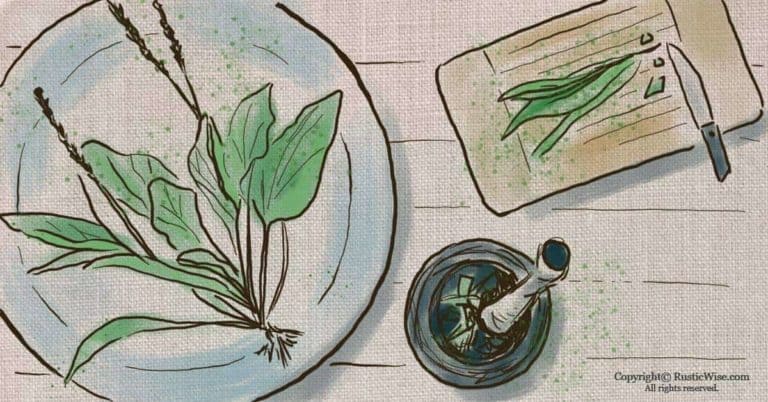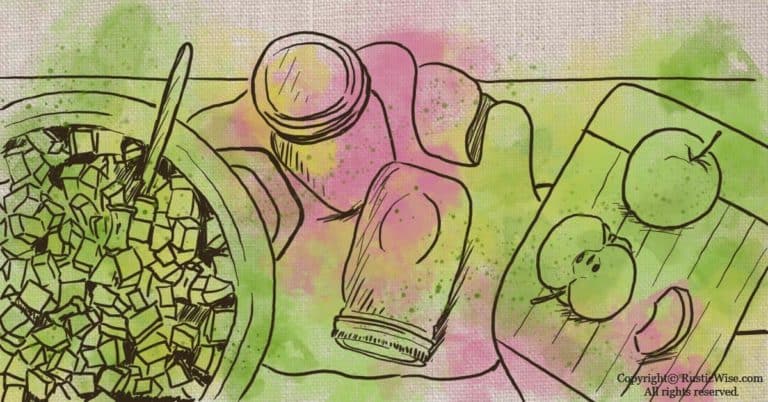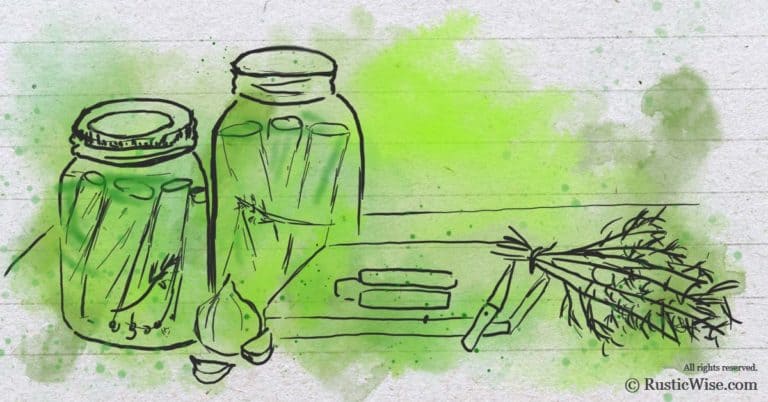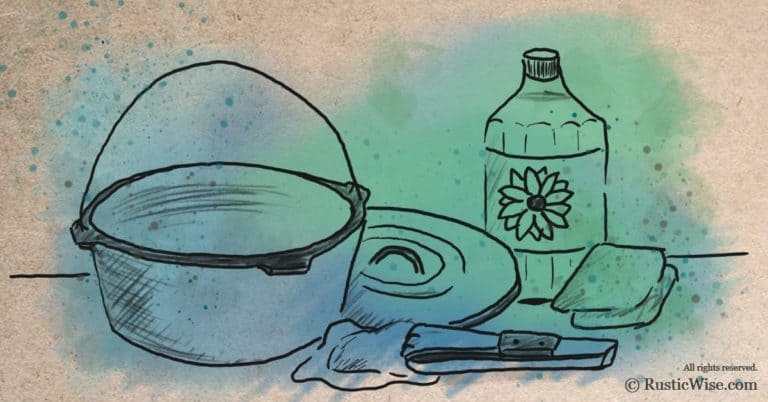What’s the Microwave Safe Symbol? Vital Tips on Heating Food Safely
The microwave is probably one of the most polarizing kitchen appliances. While it’s a godsend to some, others view it as an abomination. But the convenience of microwave ovens means most of us have one at home.
Which leads us to another murky area: the microwave safe symbol. What does it look like? The problem is that there’s no universal or standardized microwave safe symbol.
We’ve rounded up a few of the most commonly used microwave safe symbols. We’ll also cover what materials are generally safe to use in your microwave oven. Plus, ones that you should definitely avoid!
What does the microwave safe symbol look like?
While there’s no official microwave symbol, the good news is that it’s pretty easy to identify microwave symbols or labels (thanks to graphic designers!).
Many symbols have wavy lines. Sometimes the wavy lines are on top of a dish or bowl. Other symbols have waves inside a rectangle, while others resemble a microwave oven.
We’ve rounded up a few of the most commonly used microwave safe symbols:
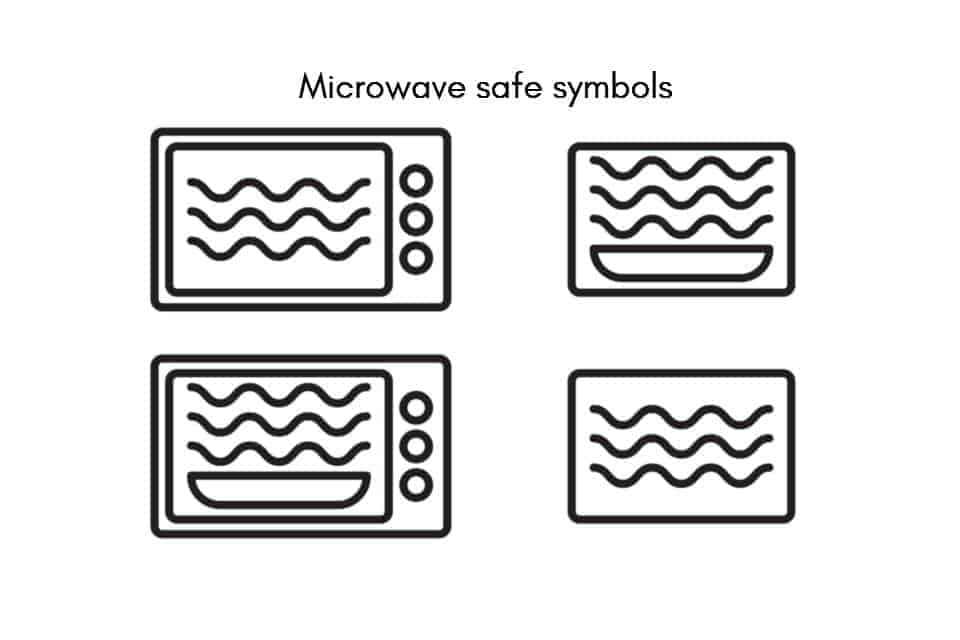
If there are no symbols, look for words like, “microwave safe” or “microwaveable.” Many containers that are food safe for microwaves are also dishwasher safe.
Why use microwave safe containers?
If you’re in a rush, you may not give much thought to the type of container you’re using to reheat your leftovers. But using an improper container can cause food safety issues.
Some plastics may melt or warp under high microwave temperatures, resulting in burns or spills.
Researchers have found that trace amounts of chemicals, including bisphenol-A and phthalates may transfer from containers to food when heated using non-safe containers.¹
So unless you want to eat a side of toxic chemicals with your leftover lasagna, stick with proper heat resistant containers.
What makes materials microwave safe?
The U.S. Food and Drug Administration (FDA) has a set of standards and guidelines that materials must meet to be deemed “microwave safe.” They regulate this under the Federal Food, Drug, and Cosmetic Act (FD&C Act).²
The FDA tests materials to ensure they are food-safe and can withstand high temperatures. This includes evaluating frozen dinner packaging, microwave popcorn bags, and plastic wrap.²
Criteria such as any potential toxicology concerns are evaluated and must fall within safe health guidelines. Materials must be deemed safe for intended use before they can be used and marketed.²
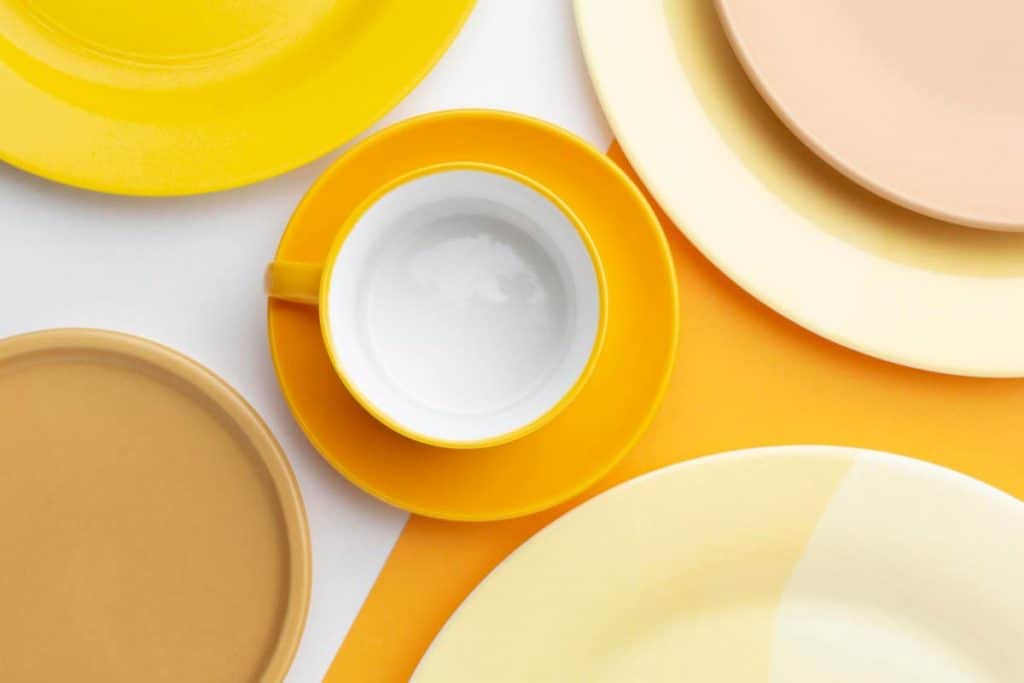
What materials are microwave safe?
It’s a good practice to look at the bottom of each container to check if the material is actually microwave safe.
The following materials are generally safe:
- Glass: Most types of glassware are microwave safe, especially borosilicate glass (Pyrex) that’s heat-safe and thermal shock resistant. Microwave safe glass is generally thicker. Glass that’s not heat resistant may shatter.
- Ceramic: A durable and non-porous material, most kitchen dinnerware, including stoneware and porcelain, is microwaveable. Make sure not to microwave if there are metallic edges or decorative elements!
- Some plastics: While some types of plastic are definitely NOT safe (margarine containers, for example), other higher quality plastics have been tested for heat safety and are safe to use in the microwave. Some plastics with the number 1 on the bottom are meant for one time use only, and should not be reused.
- Plastic wrap: Look for the microwave safe symbol on your package of plastic wrap. Not all types of plastic wrap are microwave-friendly.
- Parchment paper and wax paper: Once again, check the packaging for a microwave symbol as not all types of parchment paper and wax paper are created equal. Papers that are NOT labelled as microwave safe may burn or catch on fire. Heat resistant food-grade papers can withstand higher temperatures than other papers.
- White microwave-safe paper towels: Generally safe to use, but it’s best to keep an eye on it and avoid overheating.
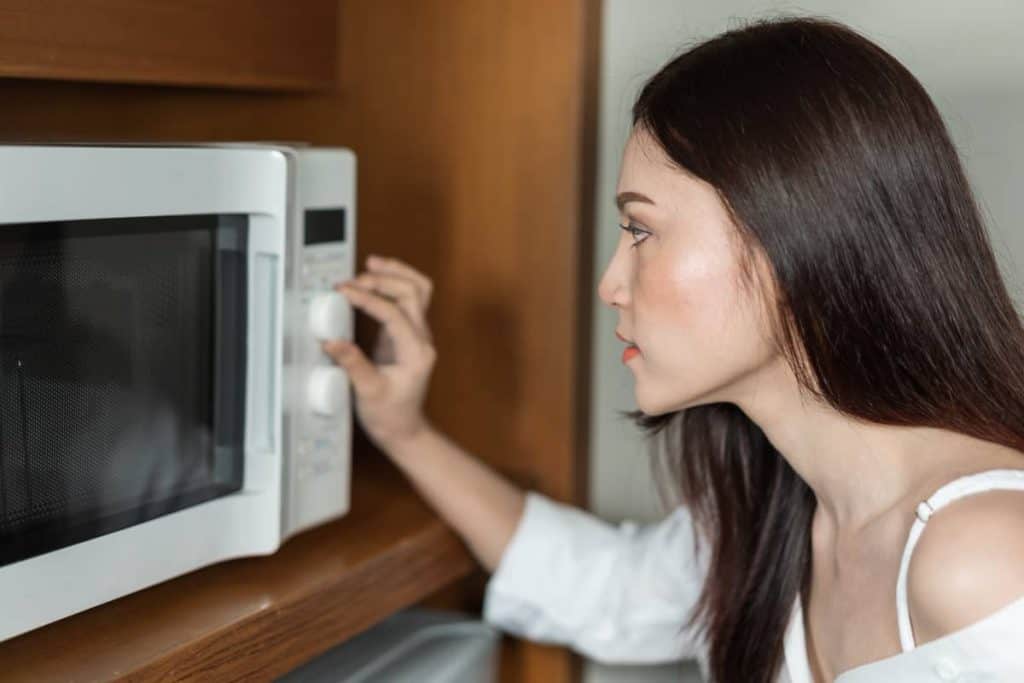
What materials should you NOT microwave?
We all have heard (or maybe experienced) horror stories of microwaves burning because someone accidentally left a spoon or some tinfoil in the microwave.
Here’s a roundup of materials that should come nowhere close to your microwave!
- Any metals: Rule #1—no metals of any kind! This includes any aluminum tinfoil, metal utensils, or dinnerware lined with metallic elements. Sometimes metal finds a way in through unexpected materials like twist-ties, or certain takeout boxes. Once metal finds a way inside, sparks will fly!
- Melamine: Most melamine dinnerware is not typically microwave safe. This often includes dining sets made for outdoor use, or decorative bowls.³
- Some styrofoam or foam takeout containers: Unless specifically labelled as microwave safe, avoid heating food in styrofoam containers. Styrofoam may melt and/or emit harmful chemicals to your food.
- Some plastics: Once again, only use plastics labelled as microwaveable. Containers such as margarin or yogurt tubs should NOT be heated.
- Don’t reuse containers from microwave meals: These are meant for once-time use.²
- Takeout or fast food containers: It’s best to transfer takeout food to a glass or ceramic plate for reheating. Many plastic cold-storage containers or polystyrene trays are not good for microwaving.
- Most plastic bags (grocery or produce bags), or plastic wraps aren’t intended for microwave use.
- Newspapers: Inks may migrate to food, and newspapers can’t withstand higher temperatures.
- Brown paper bags: These thin paper bags are not heat resistant and easily catch fire.
- Colored paper plates: These flimsy party plates contain dyes that may migrate to food and are not heat proof.⁴
Did you know...According to the University of Illinois, foods higher in fat (including cheese and meats) have a higher chance of chemical leaching during microwaving than foods containing less fat.¹
Microwave best practices
Now that we know which materials are safe to microwave (plus those that aren’t), let’s look at how to best reheat or cook foods in the microwave oven.
- Cover it up loosely: Not only does covering food prevent a messy food explosion inside your microwave, it also helps retain moisture and nutrients, and cook the food more evenly. Use a microwave safe lid, or other heatproof lid which allows for steam to escape.
- Leave a gap: If using plastic wrap, it’s a good practice to leave a gap (1 inch or more) between the food and the plastic. Prevent any lids from touching food.
- Let it rest: Did you know that food still continues to heat up and cook for several minutes after the timer stops? Let your food rest for at least 3 minutes before taking it out and serving.
- Avoid overheating: When exposed to high fat foods, some paper products (such as those from frozen microwave meals, or popcorn bags) are prone to overheating, and may catch on fire. Follow the microwave instructions on the box.
- Stir halfway: For more even heating, stop and stir foods halfway through the cook time. This avoids heat spots, and those dreaded foods that are still cold at the center!
Are microwaves safe to use?
There’s a lot of misconceptions about microwaves and their safety on human health. But, yes, microwaves are safe to use according to the FDA.
Microwaves work through a type of electromagnetic radiation (a combination of electrical and magnetic energy). The term “radiation” is one that worries many people.
A special tube called a magnetron produces microwaves inside the appliance. These waves are reflected upon the metallic interior and absorbed by the food. Water molecules present in foods move and vibrate which in turn produces heat needed to warm up the food.
This microwave energy is then converted to heat to continue warming up foods. So, microwaved foods are NOT actually radioactive.
The controversy about microwaving plastics
In 2018, the American Academy of Pediatrics (AAP) released a report raising concerns about food packaging, plastic safety and its potential concerns for children’s health.⁶
The American Chemistry Council (ACC) shot back a rebuttal debunking many of the myths people have about plastics and safety. They argue the regulations put in place by the FDA along with, “food packaging in the U.S. is best in class.”³
The ACC address the myth that certain plastics labelled with recycling codes (3), (6) and (7) should be avoided. The ACC says the labelling of these plastics has nothing to do with food safety, but how they are sorted for recycling.
The takeaway: The ACC says that plastics that are labelled as microwave-safe undergo stringent testing and are safe when used as intended.
A closer look at microwave safe plastic symbols and numbers
When it comes to plastics, the best bet is to check the bottom of the container for a microwave safe symbol, rather than relying on the numbers. (For a good example of this point, check out the description for Recycling number 5 below.)
Plastic materials are labelled with numbers 1 through 7.⁷
- Recycling number 1 (PETE or PET): Safe for food contact. You’ll find water bottles, soft drink bottles, and condiment bottles made with this plastic. Not generally microwave safe.
- Recycling number 2 (HDPE): High-density polyethylene (HDPE) is a hard and durable plastic used to make milk jugs, and squeeze syrup containers, along with some grocery bags. Safe for food contact.
- Recycling number 3 (PVC): Polyvinyl chloride (PVC) is used to produce tamper-proof medicine containers such as blister packaging for pills. Safe for food contact.
- Recycling number 4 (LDPE): Low-density polyethylene (LDPE) is flexible yet durable. It’s used to make bread bags and coffee can lids. Safe for food contact.
- Recycling number 5 (PP): Polypropylene is durable and often made to withstand higher temperatures for use in dishwashers or microwaves. This same plastic also makes yogurt and sour cream containers (which are NOT microwave safe). This is a great example of checking the bottom of a container for a microwave safe symbol rather than relying on the recycling number. Safe for food contact.
- Recycling number 6 (PS): Polystyrene (PS) is a hard and rigid plastic often used to make lids for fast food containers and plastic cups. Safe for food contact.
- Recycling number 7 (Other, or O): This is a general “other” category that can include products made with other plastics besides the 6 listed above. Most often, you’ll find strawberry clamshell containers made of this. Safe for food contact.
Final thoughts on microwave safe symbols
The bottom line is to only use products labelled as microwave safe, and to use them as intended. While there’s no “official” microwave safe symbol, most have a set of squiggly lines.
Most glass and ceramic containers are safe to microwave. When it comes to plastics, however, it gets murky.
While the AAP cautions against using some plastics, the ACC claims plastics labelled as microwaveable are safe.
So what’s a person to believe? If, after reading the rebuttal from the American Chemistry Council (ACC), you still don’t want to use plastics in the microwave, don’t. Use glass or ceramic instead. Or, you could go old-school and fire up the stove to reheat leftovers.
A small toaster oven is also another option. While it’s not as instant as a microwave (you’ll need to preheat it for a few minutes), it works just as well.
Related questions
Is it safe to put porcelain in the microwave?
In general, most porcelain dinnerware is microwave safe. However, if it has metallic finishes such as gold, silver, or brass edging for example, do NOT microwave. Same goes for other delicate decorations that may get damaged in the microwave.
Check the bottom to see if it has a microwave safe symbol, or check your manufacturer’s website. It’s often better to just transfer your food to a dish that you know is microwave-friendly, than risk the chance of a cracked dish, or potential chemical leaching.
If there is no symbol, can you assume it’s microwave safe?
I would err on the side of caution and actually assume the opposite—that the container is NOT microwave safe unless it contains a label. Why take the potential risk of chemicals leaching into your food or drinks?
Can you microwave food in a Ziploc bag?
Yes, according to Ziploc, their range of bags stand up to the rigors of microwave heating. Here are a few recommendations:
- Place the Ziploc baggie onto a microwave safe plate.
- Leave a 1-inch vent while heating.
- Handle with care and avoid overheating.
Would you like more timeless tips via email?
Fun tips to help you live an independent, self-sustaining lifestyle. Opt-out at any time.


References
- University of Illinois Extension, Save Time: Use Microwaves Safely, https://extension.illinois.edu/sites/default/files/microwave_cooking.pdf. Accessed April 2022.
- U.S. Food and Drug Administration (FDA), Plastics and the Microwave, https://permanent.access.gpo.gov/lps1609/www.fda.gov/fdac/features/2002/602_plastic.html. Accessed April 2022.
- American Chemistry Council, Setting the record straight: Response to American Academy of Pediatrics report, https://www.americanchemistry.com/chemistry-in-america/news-trends/blog-post/2018/setting-the-record-straight-response-to-american-academy-of-pediatrics-report. Accessed April 2022.
- Rellinger, Diane (04 December 2013). “Use only microwave safe containers when cooking and reheating foods,” Michigan State University. Accessed April 2022.
- U.S. Food and Drug Administration (FDA), Microwave Oven Radiation, https://www.fda.gov/radiation-emitting-products/resources-you-radiation-emitting-products/microwave-oven-radiation. Accessed April 2022.
- American Academy of Pediatrics (AAP), Some food additives raise safety concerns for child health; AAP offers guidance, Released July 23, 2018. Accessed April 2022.
- Chemical Safety Facts, Types of Plastic Food Packaging and Safety: A Close-Up Look, https://www.chemicalsafetyfacts.org/types-plastic-food-packaging-safety-close-look/. Accessed April 2022.

Author: Josh Tesolin
Josh is co-founder of RusticWise. When he’s not tinkering in the garden, or fixing something around the house, you can find him working on a vast array of random side projects.

